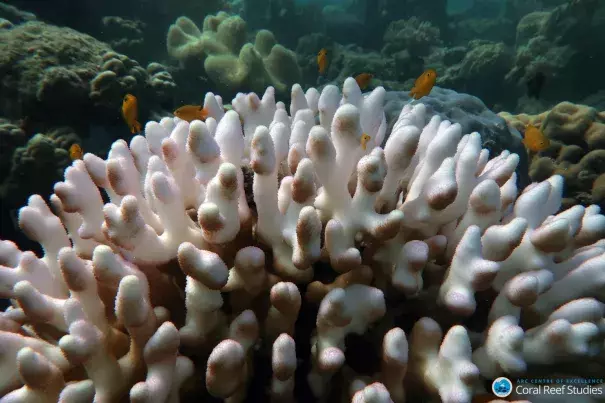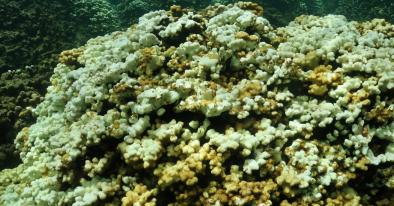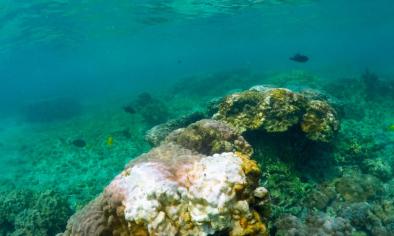Great Barrier Reef suffers its most widespread mass bleaching event on record

Climate Signals Summary: Climate change is increasing ocean temperatures, which makes coral bleaching events more frequent and severe. This current coral bleaching event was the largest ever, beating the record global one seen from 2014 - 2017.
Article Excerpt: Earlier this year, scientists warned that the Great Barrier Reef could be on the brink of its most widespread bleaching event ever recorded. That fear has been realized.
Surveys conducted by scientists at Australia’s James Cook University and the Great Barrier Reef Marine Park Authority show that a summer of extreme heat has caused the reef, which is a World Heritage Site, to suffer a mass bleaching of unprecedented scale. Corals from the far north to the southern tip of the 1,400 mile-long ecosystem are experiencing severe impacts.
It was also one of the reef’s worst mass bleaching episodes in terms of intensity, second only to 2016, which killed half of all shallow-water corals on the northern Great Barrier Reef.
Unlike the summer of 2016, when an intense marine heat wave coincided with one of the strongest El Niño events on record, this past summer brought a bleaching event without any assistance from the Pacific climate oscillation.
El Niño events can elevate ocean temperatures in that part of the world, making bleaching events more likely. To scientists, this is another clear sign that human-caused climate change is the primary driver behind these devastating events.
Mark Eakin, coordinator for the National Oceanic and Atmospheric Administration’s Coral Reef Watch program, described the rate of recurrence of these events as “truly disturbing.” Bleaching from the 2016 event was followed by a recurrence in 2017, when there was also an absence of an El Niño.
“In 2016 and 2017, the Great Barrier Reef had their first back-to-back bleaching events. Now we have the third bleaching event in five years,” Eakin wrote in an email.
...
Across the Great Barrier Reef, changes in local weather patterns related to El Niño, including higher than average air and ocean temperatures, clear skies and lots of sunshine, can help fuel bleaching.
But while the first recorded mass bleaching event on the Great Barrier Reef in 1998 and the most intense mass bleaching event on record coincided with El Niño, mass bleachings in 2002, 2017 and now 2020, did not.
This, along with the fact that the gap between severe bleaching events is shrinking, suggests that as summers grow warmer due to climate change, the reef will suffer heat stress more regularly regardless of whether the tropical Pacific is in a favorable state. It is telling, Hughes said, that February 2020 brought the highest monthly sea surface temperatures ever recorded across the Great Barrier Reef, with no El Niño to assist.
“It’s now clear that we can have major bleaching events caused by global climate change alone with no tropical forcing,” Eakin said, adding that we may be seeing “early signs” of a world where the reef bleaches on a near-yearly basis.
Related Content





